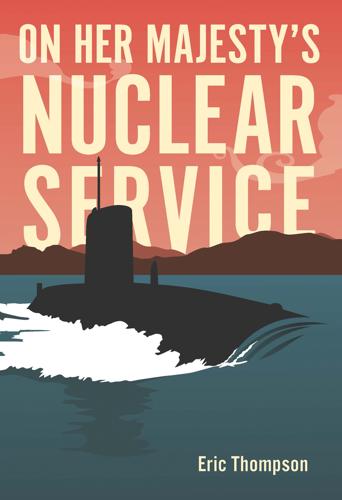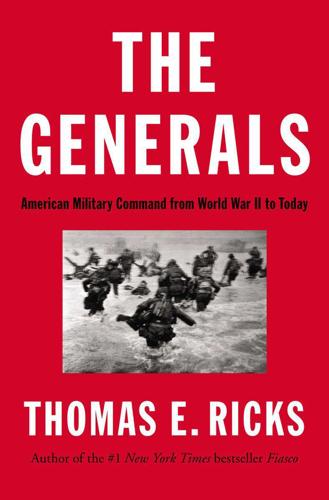
Four Battlegrounds
by
Paul Scharre
Published 18 Jan 2023
Position in AI Race,” FedScoop, September 9, 2020, https://www.fedscoop.com/esper-ai-announcements-ai-race/. 206“either introduce efficiencies, or find cost savings”: Rachael Martin, interview by author, April 29, 2020. 206“Game Changer”: “The JAIC’s Business Process Transformation Mission Initiative Delivers,” Joint Artificial Intelligence Center, May 14, 2020, https://www.ai.mil/blog_05_14_20-mi_business_process_transformation_mission.html. 206“amateurs talk tactics”: “Where does the quote of ‘Amateurs talk strategy; professionals talk logistics’ come from? Is it true or not?” Quora, June 20, 2019, https://www.quora.com/Where-does-the-quote-of-Amateurs-talk-strategy-professionals-talk-logistics-come-from-Is-it-true-or-not. 207precision-guided weapons: Barry D. Watts, Six Decades of Guided Munitions and Battle Networks: Progress and Prospects (Center for Strategic and Budgetary Assessments, March 2007), https://csbaonline.org/research/publications/six-decades-of-guided-munitions-and-battle-networks-progress-and-prospects; Lauren Kahn and Michael C.
…
Martin said, “The more that we can free up our military members to actually do warfighting functions as opposed to office functions, I think that we all win as a department overall.” Many of the military applications DoD is focusing on—predictive maintenance, image processing, or process automation—are back-office functions to support military operations, but that doesn’t mean they are unimportant. A common military aphorism is that “amateurs talk tactics; professionals talk logistics.” The vast majority of what the DoD does on a daily basis isn’t actually warfighting. It’s moving people and things from point A to point B. It looks a lot like what Walmart or Amazon does; it’s what happens at the end that differs. Fighting wars is what makes the military unique from other organizations, but the vast majority of military activity is in support, headquarters, administrative, or logistics functions.

An Edible History of Humanity
by
Tom Standage
Published 30 Jun 2009
Solar panels and wind turbines are the most obvious examples, but it may also be possible to tinker with the biological mechanism of photosynthesis to produce more efficient solar cells, or to create genetically engineered microbes capable of churning out biofuels. The trade-off between food and fuel has resurfaced in the present, but it belongs in the past. PART V FOOD AS A WEAPON 9 THE FUEL OF WAR Amateurs talk tactics, but professionals talk logistics. —ANONYMOUS The fate of Europe and all further calculations depend upon the question of food. If only I have bread, it will be child’s play to beat the Russians. —NAPOLEON BONAPARTE “MORE SAVAGE THAN THE SWORD” What is the most devastating and effective weapon in the history of warfare?

Waging a Good War: A Military History of the Civil Rights Movement, 1954-1968
by
Thomas E. Ricks
Published 3 Oct 2022
THE MARCH ON WASHINGTON, MID-1963 Taking the National Stage Logistics is often the unacknowledged key to military success. It also was the decisive aspect of the 1963 March on Washington for Jobs and Freedom. But what does that mean? Inside the military, everyone knows logistics is vital. As an old saying puts it, “Amateurs talk tactics, professionals talk logistics.” But there is rarely any drama to logistics. The better it goes, the less outside attention it receives. There are few, if any, heroic films made about logistics. In a nutshell, logistics means the planned military movement of people and goods—primarily food, fuel, water, medicine, and ammunition—in such a fashion as to have everything in the right place at the time when it is needed to carry out a mission.
…
“We are on the threshold”: Quoted in Garrow, Bearing the Cross, 265. “We are ready to go on a national level”: Quoted in Branch, Pillar of Fire, 102. “agreed that it would take”: Branch, Pillar of Fire, 102. King was even thinking about conducting sit-ins: Jones, The March on Washington, 167. 7. The March on Washington, Mid-1963 “Amateurs talk tactics”: See, for example, Barrett Tillman, D-Day Encyclopedia: Everything You Want to Know About the Normandy Invasion (Regnery, 2014). Etappenschweine: David Moore, “Logistics,” in The Oxford Companion to Military History, ed. Richard Holmes (Oxford University Press, 2001), 515. “be the spark”: Quoted in Lucy Barber, Marching on Washington: The Forging of an American Political Tradition (University of California Press, 2002), 150.

On Her Majesty's Nuclear Service
by
Eric Thompson
Published 18 Apr 2018
A few weeks later, the appointment was vetoed by my Director-to-be who thought I would cause trouble because of the Marconi incident with my Thompson Torpedo and for fitting Sub Harpoon in Odin. It was outrageously below-the-belt. I was then appointed to DNLP, which I assumed to be the Directorate of Naval Lost Property but was actually the Directorate of Naval Logistic Planning. As any half-qualified warmonger will tell you: when it comes to war, amateurs talk tactics, professionals talk logistics. DNLP was the Planning Directorate for Fleet Support, one of the largest organisations in the entire Defence establishment. The Chief of Fleet Support managed the Royal Dockyards, the Royal Fleet Auxiliary (tankers, stores and ammunition ships), naval aircraft, armament depots, the flotilla of marine auxiliary craft such as tugs, aerial farms, telephone exchanges, and the entire supply chain that provided victuals, spare parts, transport, clothing and medical supplies.

The Gamble: General David Petraeus and the American Military Adventure in Iraq, 2006-2008
by
Thomas E. Ricks
Published 14 Oct 2009
Stone commented: “History has shown us that leaders often rise from the most difficult of times and circumstances, and we should not be surprised if Iraq’s future leaders are today being held in coalition force custody.” The way they were treated today might shape the country’s policies in the future, he warned. SURGING THE IRAQIS An old military aphorism holds that amateurs talk tactics, but professionals talk logistics. In fact, real military insiders often focus on larger personnel issues—raising, training, and equipping the force—because that is the key to long-term, sustainable success. The U.S. effort to create a new Iraqi military had never gone particularly well. Part of that grew out of the political obstacles facing Iraq: A member of the Mahdi Army, for example, might not be well equipped or trained, but he knew what he was fighting for.

The Generals: American Military Command From World War II to Today
by
Thomas E. Ricks
Published 14 Oct 2012
In personnel policy In Colorado Springs, one evening in March 1976, four military officers were discussing American personnel policies in the Vietnam War. “If you attempted to run a business like that, it would go under,” commented an Air Force officer. “Ours did,” an Army infantry major responded. There is an old military saying that amateurs talk tactics, while professionals talk logistics. In fact, real insiders talk about personnel policy, which as they know shapes the American military to a surprising extent. Even had the Vietnam War been better conducted by American generals in the field, the personnel policies put in place by generals back at the Pentagon still might have undercut the American effort.

Connectography: Mapping the Future of Global Civilization
by
Parag Khanna
Published 18 Apr 2016
Today the principle could simply be called competitive connectivity: The most connected power wins. States must protect their borders, but what matters are which lines they control: trade routes and cross-border infrastructures. All great strategists know the importance of the saying “Amateurs talk strategy; professionals talk logistics.” Empires have always focused on infrastructure as a tool of extending influence. The Romans and the Ottomans built sturdy roads stretching far from their capitals and placed these on maps used by armies and traders. From the fifteenth century onward, European colonial empires built standing supply lines and overseas administrative capitals across the Atlantic and Indian Oceans.